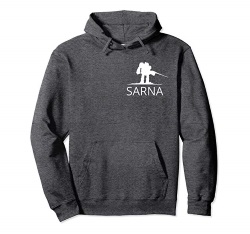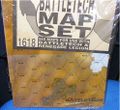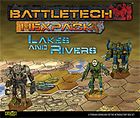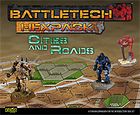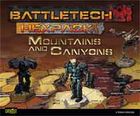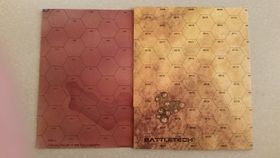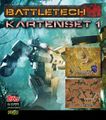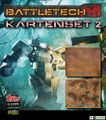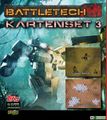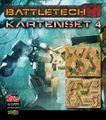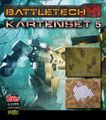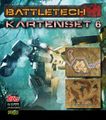Mapsheet
Sarna News
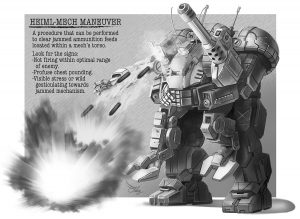
- Bad ‘Mechs - Sentinel
- HEXTECH Review - Wave 3 Brings More Urban Options To Your Battlefield
- Your BattleTech News Round-Up For March, 2024
- Crashing 'Mechs With Jennifer Brozek, Author Of The Rogue Academy Trilogy
- Getting The Word Out With Rem Alternis, Catalyst Community & Marketing Director
- Read more →
In the classic BattleTech board game, as well as in most other games set in the BattleTech universe, the main gameplay takes place on a mapsheet with hexagonal playing fields. Typically, two mapsheets would be included with every boxed set. Sets with other playing maps were later produced as game supplementals.
Although a number of "official" mapsheets exist for BattleTech, players are by no means required to use these. The game can be played on essentially any terrain. Players are free to create hex-based terrain to play on, and earlier mapsheets had blank flipsides with hex grids on which players could draw terrain features as desired. Various fan organisations and third parties have created custom mapsheets for tournaments or general gaming.
Contents
Mapsheet
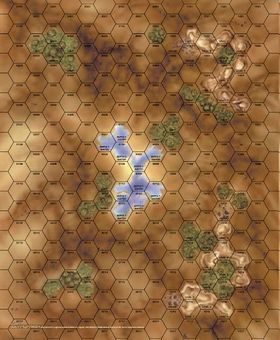
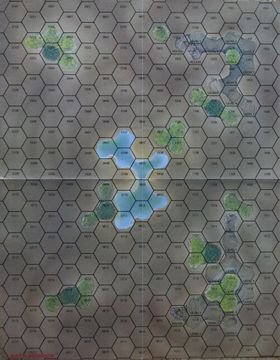
The standard mapsheet layout has remained unchanged from the original BattleDroids edition through to the latest editions, though there have been cosmetic changes. The printed size of a standard mapsheet is 22 inches by 18 inches (not 22 by 17 as many rulebooks suggest).[1]
This basic mapsheet, two of which are included in each boxed set, is a standardized size and has an addressing scheme printed on the map in a staggered row and column format. There are fifteen columns, 01XX through 15XX, and there are nominally 17 rows, XX01 through XX17. Additionally there is an unaddressed half hex column on the sides of the mapsheet that make up a "sixteenth column" when multiple mapsheets are tiled. On a standard mapsheet the hex size as originally printed is approximately 1.25 inches and depicts terrain 30 meters (roughly 100 feet) across. As published, BattleTech mapsheets have terrain, including vegetation, hydrologic features and topography marked. The flipside was a blank hex board in earlier editions; such blank playing fields are not considered tournament-legal maps though.[citation needed]
Under standard rules the mapsheet is also referred to as a unit of distance with the range of artillery pieces being originally expressed in terms of the number of mapsheets (or "boards") a given unit could fire[2]. Under AeroTech rules, each hex on the low altitude map corresponds with a a mapsheet at the ground level[3]. Total Warfare provides rules how maps may (or may not) be placed to form bigger playing fields, and provides that in the absence of actual mapsheets (e.g. when playing on other hex terrain), one "board" translates as 17 hexes for determining range.
Other board games in the BattleTech universe have generally used mapsheets that are printed to the same size hex size as the original mapsheet, even though other games have represented different distances per hex: The mapsheets included with BattleForce originally represented 180m per hex[4] compared to the 30m per hex of standard BattleTech. The BattleForce mapsheet is a double size mapsheet, being exactly twice the width, in hexes, of the standard BattleTech mapsheet, with columns from 01XX to 32XX. Similarly, the mapsheets in the Solaris VII game represent only 7.5m of ground distance, a quarter of the scale of standard BattleTech. Nonetheless, as the hexes are printed to the same size on paper and use the same map symbology the maps can be used interchangeably between these various BattleTech scales. BattleTroops was one notable departure from this printing convention, instead using a layout of points in a triangular (or arguably hexagonal) pattern rather than a hex-grid[5]. The original AeroTech map was another departure, being printed on a half inch hex-grid rather than the one and a quarter inch grid in BattleTech for both an outer space map and a low altitude map.
Up until 1988 (i.e. up until the first edition of Map Set 2) the BattleTech maps were printed on thick cardboard similar to the maps included with the BattleTech 2nd Edition and CityTech boxed sets.
Starting with the second edition of Map Set 2 (1991) and the BattleTech, Third Edition (1992) boxed set, maps were printed on thinner paper. This allowed maps to be included in some sourcebooks, too (see Other maps below).
The 25th Anniversary Introductory Box Set and Hex Pack: Lakes and Rivers were the first products to feature a new generation of thick, vinyl covered double-sided map boards from 2010 onwards.
From 2002 until 2008 the various game supplementals, including map sets, were produced under the "Classic BattleTech" moniker to differentiate them from supplements for the "MechWarrior: Dark Age" brand. Afterwards, the line reverted back to just "BattleTech".
Map Sets
A number of Map Sets and Map Set Compilations were published as supplements for the game, providing additional gaming maps with new hex-based terrain. In Germany, Map Sets 2 through 5 (with translated map markings) were sold as GeoTech I through IV by FanPro.
Map Set
FASA product #1610; also colloquially known as the "Map Set #1". Released in 1985.
Map Set
Maps included:
Map Set 2
FASA product #1618. Released first in 1988 with cardboard maps and again in 1991 with paper maps, with the same product number. German edition published in 1993 as "GeoTech I".
Map Set 2
Maps included:
Map Set 3
FASA product #1638, released in 1991. German edition published in 1993 as "GeoTech II".
Map Set 3
Maps included:
Map Set 4
FASA product #1663, released in 1991. German edition published in 1993 as "GeoTech III".
Map Set 4
Maps included:
Map Set 5
FASA product #1683, released in 1997. The "Open Terrain #1" map was identical to the "Open Terrain" map previously published in the first Map Set, albeit printed on paper instead of cardboard. German edition published in 1997 as "GeoTech IV".
Map Set 5
- MapSet5full.jpg
Cover wrap front/back
Maps included:
Map Set 6
FASA product #1723, released in 2000.
Map Set 6
Maps included:
- MapBoxCanyon.jpg
Box Canyon
Map Set 7
Map Set 7
FanPro product #10972, released in 2002.
Maps included:
Map Set Compilation 1
FanPro product #10990, released in 2003. Includes all maps from Map Sets 2 through 4.
Map Set Compilation 2
FanPro product #35012, released in 2005. Includes the maps from Map Sets 5 and 6, plus Planetary Assault Maps 1 and 2 from BattleForce 2 and the BattleSpace map.
Extra maps included:
Map Pack: Solaris VII
FanPro product #35002, released in 2005.
- (see Mappack: Solaris VII for full article)
Besides being a compilation of previously published maps for various Solaris Games Dueling Arenas, for play under either Solaris-style 'Mech Duel Rules or classic BattleTech (board game) rules, the pack includes a sourcebook section detailing the gaming world and some of its stables. Special rules are provided for playing on certain maps.
The complete set of Solaris arena maps was included in the free PDF product, Experimental Technical Readout: Royal Fantasy.
Maps included:
HexPacks
The first HexPack (occasionally also spelled as two words, "Hex Pack") was released in 2010 and heralded a new style for maps, which were now printed on thick, double-sided gameboard-style cardboard with vinyl covering, with different maps printed on the two sides. In addition, punchout map pieces of various sizes are included to modify the maps as well as a booklet with scenarios and rules expansions for the basic game from Tactical Operations. (The BattleTech 25th Anniversary Introductory Box Set may have been intended to be the first product featuring these improved maps, but its release was delayed until 2011 by other issues.)
Hex Pack: Lakes and Rivers
CGL product #35140, released in 2010.
- (see HexPack: Lakes and Rivers for full article)
Maps included: River Valley, Large Lakes #2 (flip-sided).
Hex Pack: Cities and Roads
CGL product #35141, released in 2011.
- (see HexPack: Cities and Roads for full article)
Maps included: City (Skyscraper), City (Hills/Residential) #1 (flip-sided).
Hex Pack: Mountains and Canyons
CGL product #35142, released in 2012.
- (see HexPack: Mountains and Canyons for full article)
Maps included: Large Mountain #1, Deep Canyon #1 (flip-sided).
MapPacks
In early 2013 Catalyst Game Labs began publishing the MapPack series, PDF editions of previously published maps. Using the original map sheet art, and sized for compatibility with the original printed sheets and newer Hex Packs alike, they are meant as a PDF game aid to be printed out as required. Besides six individual maps, the MapPack Flatlands Terrain Set was published that combined those six maps for a lower price. Three months later five more maps and the MapPack Hill Terrain Set (including the five new maps and the Desert Hills map that had already been part of the previous set) were published.
- MapPack Open Terrain 1.jpg
MapPack: Open Terrain 1
- MapPack Open Terrain 2.jpg
MapPack: Open Terrain 2
- MapPack Desert Hills.jpg
MapPack: Desert Hills
- MapPack City Ruins.jpg
MapPack: City Ruins
- MapPack CityTech Map.jpg
MapPack: CityTech Map
- MapPack Scattered Woods.jpg
MapPack: Scattered Woods
- MapPack Flatlands Terrain Set.jpg
MapPack: Flatlands Terrain Set
- MapPack Hill Terrain Set.jpg
MapPack: Hill Terrain Set
MapPack Worldwide Event 2018 Terrain Set
- (see MapPack: WWE2018 Terrain Set for full article)
In the wake of the Dig, Defend, or Die 2018 Worldwide Event, a series of related PDF products was released by CGL that included the scenario's Terrain Set of four newly created maps and was published under the "MapPack" moniker as a free release (like the other MapPacks and unlike Mappack: Solaris VII, it is a purely digital product).
Other Maps
Beyond the boxed sets and dedicated map packs, some other individual products include boardgame map sheets with hexes. Beyond these it should be noted that some products like the Turning Points series typically include maps such as individual planetary maps for the worlds featured.
BattlePack: Fourth Succession War
The "Woodland" map was first published with BattlePack: Fourth Succession War in 1998 before it was included in Map Set #6 two years later.
Luthien scenario pack
The Luthien (scenario pack) from 1993 included a loose double-sided map. One side depicted part of Imperial City, the other Kado-guchi Valley. The latter was the site of a large battle and is meant for playing on a different scale akin to BattleForce.
Renegade Legion
FASA had another successful hex-based wargame series, Renegade Legion, that used similar maps to BattleTech to the point where the first map sets were advertised as supplementals for both game lines simultaneously, in the fashion of a shared product. Conversely, some Renegade Legion products contain mapsheets that were never officially published for BattleTech, but can be used for BattleTech nonetheless. Renegade Legion had a hovertank combat system (Centurion) with maps similar in style to regular BattleTech maps, and the Leviathan and Interceptor space combat games which had maps similar to AeroTech.
The Centurion mapsheets fold out to the equivalent of two BattleTech maps. While compatible with BattleTech map topology, the hexes on the Centurion map are printed slightly larger so that the mapsheets from the two games cannot be combined.
Casus Belli magazine
The French gaming magazine Casus Belli, who had ties to the official publisher of the French edition of BattleTech (Jeux Descartes), published a BattleTech map in 1994 that is copyrighted to the magazine, but matches the style found in other BattleTech maps. The map is marked "©Casus Belli 1994 Carte concue par Michal Salicetto, dessin Bernard Bittler BATTLETECH est un jeu édité par Jeux Descartes sous licence FASA". Since this product was not published directly by a BattleTech IP owner or licensee, its status as an official product is arguable.
MWDA Solaris mapsheets
Although the MechWarrior: Dark Age clix game was designed as a miniatures game forgoing gaming maps in favor of minitature terrain, WizKids produced a number of mapsheets with the usual hex grid for various Solaris VII arenas. Hex sides were printed with various colors to show the changes in terrain features and elevations that could affect the use of certain abilities and equipment.
There was one such map for each (Light, Medium, Heavy and Assault-classs) "Solaris VII Action Pack" set and one for the "Youngblood Training Field" that went with the Atlas and Marauder promotional pieces.
The "Solaris VII Action Pack" maps are two side, one with the arena one, and the other with the same map. The four of them together form the tournament map.
- MWDAS7LightMap.jpg
Light-Class map
- MWDAS7HeavyMap.jpg
Heavy-Class map
- MWDAS7AssaultMap.jpg
Assault-Class map
- MWDASTYoungbloodTrainingField.jpg
Youngblood Training Field map
German map sets
GeoTech
Between 1990 and 1997, German BattleTech licensee FanPro, who would later also be the game's english-language publisher for a time, reproduced Map Sets 2 through 5 and sold them as GeoTech I through IV in Germany. A first, unnumbered GeoTech set was published in 1990 containing a specially produced (German) BattleTech rules booklet with excerpts from the BattleTech Manual rulebook and the Mountain Lake, Scattered Woods, Desert Hills and City Ruins maps, i.e. parts of Map Set 2, plus four plastic paper clips.
BattleTech Kartensets
German BattleTech licensee Ulisses Spiele published a range of map sets ("BattleTech Kartensets") in 2014, both as a physical product and as PDF downloads. The physical maps are thick cardboard maps akin to those from the latest boxed sets and Hex Packs, with one of the classic game maps printed on either side. The maps retained their english names, but the markings on the maps are in German. Unlike the Hex Packs, they feature no additional content beyond a single two-sided map board each.
BattleTech Starterbox
In 2017 Ulisses Spiele released a new, original BattleTech Starterbox boxed set (not to be confused with the previous "Einsteigerbox"). This box contains two all-new mapsheets in the new thick cardboard style of the HexPacks and Kartensets that were designed specifically for this product, labelled "Mine" and "Country Side 3":
